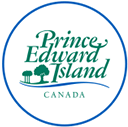FAQs
In PEI, land use planning is shared between the provincial government and local municipalities. The province oversees planning in unincorporated areas, while municipalities manage their own zoning and development rules within their boundaries.
Provincial planning is shaped by key legislation such as the Planning Act and the Lands Protection Act. These laws set the framework for zoning, subdivision, and protecting farmland, coastal areas, and other sensitive lands.
Planning decisions involve technical review, policy alignment, and public consultation. In provincial planning areas, final approvals rest with the Minister responsible for land use planning.
The province is currently running a 6-week engagement program about Land Use in PEI. You can participate online or in person between September 8 and October 17, 2025.
Municipalities with an official plan and land-use bylaws issue their own development permits so you must apply directly to the municipality for the permit. For land within provincial jurisdiction, please visit the Land Office nearest you or on our website. To determine if a PEI municipality has an official plan, view the Municipal Boundaries Map.
The Lands Protection Act sets limits on land ownership to help preserve PEI’s farmland and rural character. It works alongside planning regulations to manage how land is used and developed.
The Island Regulatory and Appeals Commission in Prince Edward Island, commonly abbreviated as IRAC. IRAC is an independent, quasi-judicial tribunal and regulatory body of the Government of Prince Edward Island. It plays a broad and critical role across various sectors of life on the Island.
Your input will help the provincial government decide on how to move forward with addressing land use in PEI.
Other factors that influence land use planning decisions include provincial laws and policies. It’s also informed by experts, local governments, and technical studies that help decision-makers consider growth in a sustainable way that benefits the whole province.
